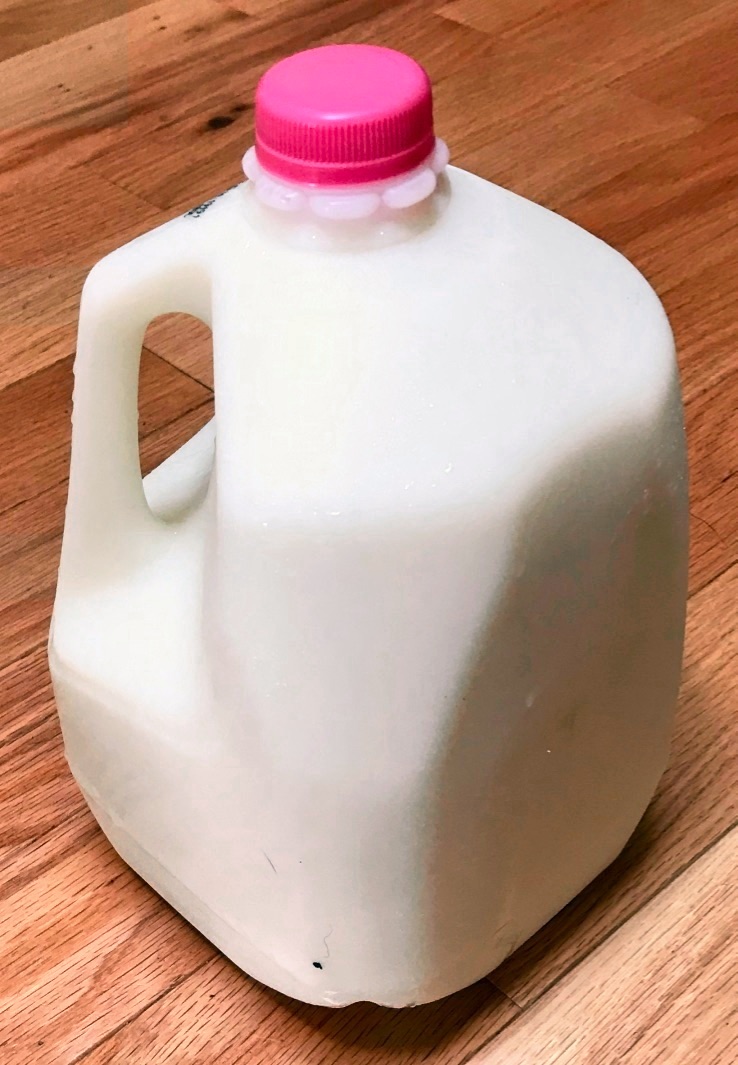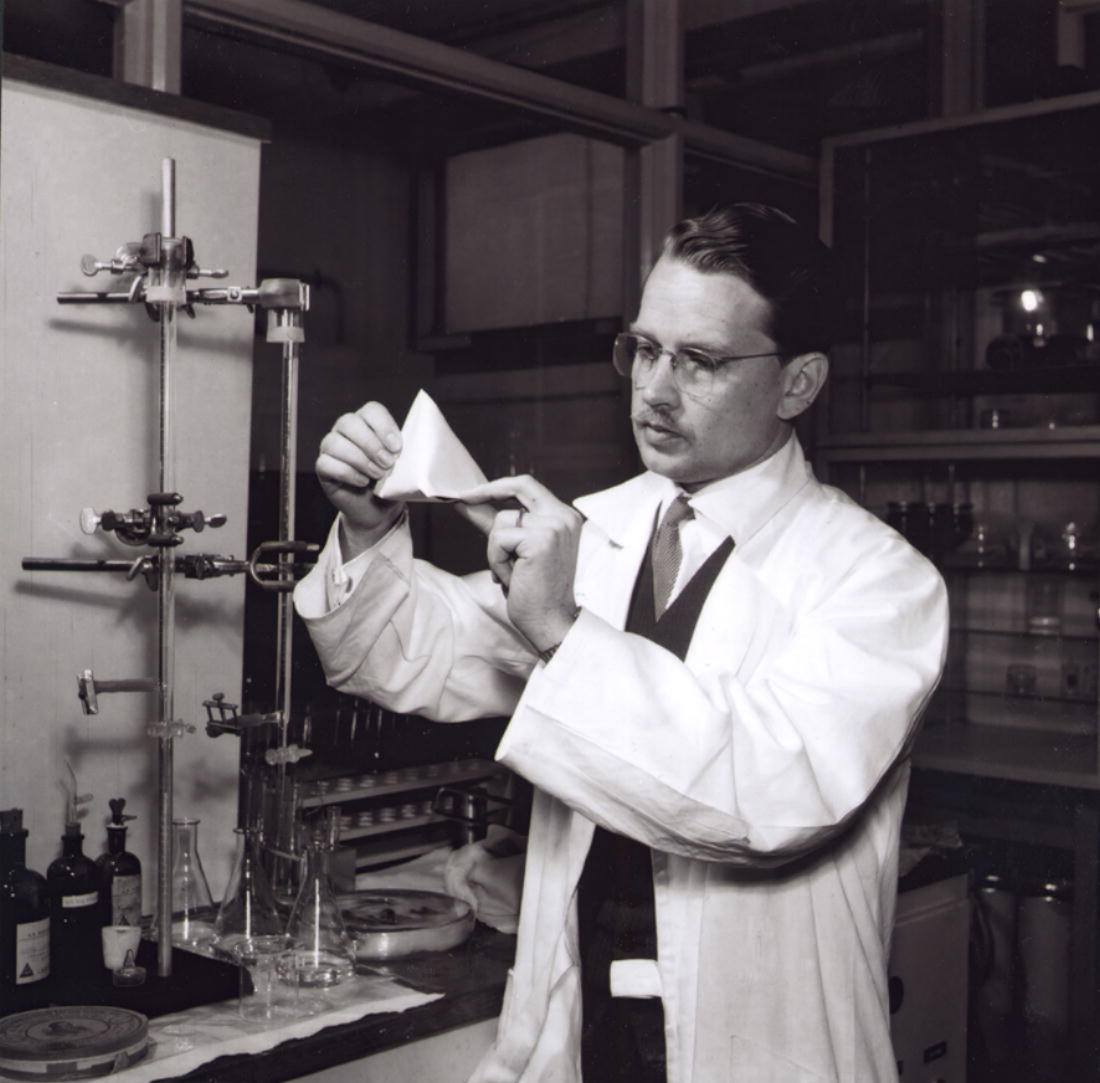|
Plastic Milk Container
Plastic milk containers are plastic containers for storing, shipping and dispensing milk. Plastic bottles, sometimes called jugs, have largely replaced glass bottles for home consumption. Glass milk bottles have traditionally been reusable while light-weight plastic bottles are designed for single trips and plastic recycling. Materials Packaging of milk is regulated by regional authorities. Use of food contact materials is required: potential food contamination is prohibited. Strict standards of cleanliness and processing must be followed. The most common material in milk packaging is high density polyethylene (HDPE), recycling code 2. Low density polyethylene (LDPE) and polyester (PET) are also in use. Polycarbonate had been considered but had concerns about potential contamination with bisphenol A. Container forms Blow molded plastic milk bottles have been in use since the 1960s. HDPE is the primary material but polyester is also used. A wide variety of milk bottle desig ... [...More Info...] [...Related Items...] OR: [Wikipedia] [Google] [Baidu] |
Bottle Of Milk
A bottle is a narrow-necked container made of an impermeable material (such as glass, plastic or aluminium) in various shapes and sizes that stores and transports liquids. Its mouth, at the bottling line, can be sealed with an internal Stopper (plug), stopper, an external bottle cap, a Closure (container), closure, or induction sealing. Etymology First attested in 14th century. From the English word ''bottle'' derives from an Old French word ''boteille'', from vulgar Latin ''butticula'', from late Latin ''buttis'' ("cask"), a Latinisation (literature), latinisation of the Greek language, Greek βοῦττις (''bouttis'') ("vessel"). Types Glass Wine The glass bottle represented an important development in the history of wine, because, when combined with a high-quality stopper (plug), stopper such as a cork (material), cork, it allowed long-term aging of wine. Glass has all the qualities required for long-term storage. It eventually gave rise to "château bottling", the ... [...More Info...] [...Related Items...] OR: [Wikipedia] [Google] [Baidu] |
Package Handle
Package handles, or carriers, are used to help people use packaging. They are designed to simplify and to improve the ergonomics of lifting and carrying packages. Handles on consumer packages add convenience and help facilitate use and pouring. The effect of handles on package material costs and the packaging line efficiencies are also critical. A handle can be defined as “an accessory attached to a container or part for the purpose of holding or carrying.” Sometimes a handle can be used to hang a package for dispensing or use. Handles can be built into a package, sometimes in the form of hand holes or hand holds. They can also be attached to a finished complete package after filling and closing, or even at the point of purchase. The performance and design criteria for handles are often detailed in a contract or specification. For example handles for some US government containers are specified in Mil-Std-648. History People have long seen a need to have package forms whi ... [...More Info...] [...Related Items...] OR: [Wikipedia] [Google] [Baidu] |
Milk Containers
Milk is a white liquid food produced by the mammary glands of mammals. It is the primary source of nutrition for young mammals (including breastfed human infants) before they are able to digest solid food. Immune factors and immune-modulating components in milk contribute to milk immunity. Early-lactation milk, which is called colostrum, contains antibodies that strengthen the immune system, and thus reduces the risk of many diseases. Milk contains many nutrients, including protein and lactose. As an agricultural product, dairy milk is collected from farm animals. In 2011, dairy farms produced around of milk from 260 million dairy cows. India is the world's largest producer of milk and the leading exporter of skimmed milk powder, but it exports few other milk products. Because there is an ever-increasing demand for dairy products within India, it could eventually become a net importer of dairy products. New Zealand, Germany and the Netherlands are the largest exporters ... [...More Info...] [...Related Items...] OR: [Wikipedia] [Google] [Baidu] |
Gallon Smashing
Gallon smashing is the act of spilling a gallon of liquid, approximately 3.78 liters in the United States, usually by breaking its container (hence 'smashing'), in a manner that appears to be accidental. The act often involves throwing a gallon of milk onto a grocery store aisle, then falling, getting members of the public to help the 'smasher' get up, and sometimes having difficulty returning to a standing position. The act is generally done as a "prank" meant to share on the internet, and so typically recorded on camera. History Gallon smashing gained popularity in 2013 after three teenagers from Vienna, Virginia posted videos of the act on their YouTube channel. The videos received more than three million views before being taken down. Teenagers around the world mimicked the act, posting dozens of filmed incidents online. In March 2013, the Fairfax County Police Department charged the teens with seven counts of disorderly conduct and destruction of property. That same month, a ... [...More Info...] [...Related Items...] OR: [Wikipedia] [Google] [Baidu] |
Quality Management System
A quality management system (QMS) is a collection of business processes focused on consistently meeting customer requirements and enhancing their satisfaction. It is aligned with an organization's purpose and strategic direction (ISO 9001:2015). It is expressed as the organizational goals and aspirations, policies, processes, documented information, and resources needed to implement and maintain it. Early quality management systems emphasized predictable outcomes of an industrial product production line, using simple statistics and random sampling. By the 20th century, labor inputs were typically the most costly inputs in most industrialized societies, so focus shifted to team cooperation and dynamics, especially the early signaling of problems via a continual improvement cycle. In the 21st century, QMS has tended to converge with sustainability and transparency initiatives, as both investor and customer satisfaction and perceived quality are increasingly tied to these factors. ... [...More Info...] [...Related Items...] OR: [Wikipedia] [Google] [Baidu] |
Reverse Logistics
Reverse logistics encompasses all operations related to the upstream movement of products and materials. It is "the process of moving goods from their typical final destination for the purpose of capturing value, or proper disposal. Remanufacturing and refurbishing activities also may be included in the definition of reverse logistics." Growing green concerns and advancement of green supply chain management concepts and practices make it all the more relevant. The number of publications on the topic of reverse logistics have increased significantly over the past two decades. The first use of the term "reverse logistics" in a publication was by James R. Stock in a White Paper titled "Reverse Logistics," published by the Council of Logistics Management in 1992. The concept was further refined in subsequent publications by Stock (1998) in another Council of Logistics Management book, titled Development and Implementation of Reverse Logistics Programs, and by Rogers and Tibben-Lembke ... [...More Info...] [...Related Items...] OR: [Wikipedia] [Google] [Baidu] |
Life Cycle Analysis
Life cycle assessment or LCA (also known as life cycle analysis) is a methodology for assessing environmental impacts associated with all the stages of the life cycle of a commercial product, process, or service. For instance, in the case of a manufactured product, environmental impacts are assessed from raw material extraction and processing (cradle), through the product's manufacture, distribution and use, to the recycling or final disposal of the materials composing it (grave). An LCA study involves a thorough inventory of the energy and materials that are required across the industry value chain of the product, process or service, and calculates the corresponding emissions to the environment. LCA thus assesses cumulative potential environmental impacts. The aim is to document and improve the overall environmental profile of the product. Widely recognized procedures for conducting LCAs are included in the 14000 series of environmental management standards of the Internat ... [...More Info...] [...Related Items...] OR: [Wikipedia] [Google] [Baidu] |
Aseptic Processing
Aseptic processing is a processing technique wherein commercially thermally sterilized liquid products (typically food or pharmaceutical) are packaged into previously sterilized containers under sterile conditions to produce shelf-stable products that do not need refrigeration. Aseptic processing has almost completely replaced in-container sterilization of liquid foods, including milk, fruit juices and concentrates, cream, yogurt, salad dressing, liquid egg, and ice cream mix. There has been an increasing popularity for foods that contain small discrete particles, such as cottage cheese, baby foods, tomato products, fruit and vegetables, soups, and rice desserts. Aseptic processing involves three primary steps: thermal sterilization of the product, sterilization of the packaging material, and conservation of sterility during packaging. To ensure commercial sterility, aseptic processing facilities are required to maintain proper documentation of production operations, showing that ... [...More Info...] [...Related Items...] OR: [Wikipedia] [Google] [Baidu] |
Shelf Life
Shelf life is the length of time that a commodity may be stored without becoming unfit for use, consumption, or sale. In other words, it might refer to whether a commodity should no longer be on a pantry shelf (unfit for use), or no longer on a supermarket shelf (unfit for sale, but not yet unfit for use). It applies to cosmetics, foods and beverages, medical devices, medicines, explosives, pharmaceutical drugs, chemicals, tyres, batteries, and many other perishable items. In some regions, an advisory ''best before'', mandatory ''use by'' or ''freshness date'' is required on packaged perishable foods. The concept of expiration date is related but legally distinct in some jurisdictions. Background Shelf life is the recommended maximum time for which products or fresh (harvested) produce can be stored, during which the defined quality of a specified proportion of the goods remains acceptable under expected (or specified) conditions of distribution, storage and display. Accordi ... [...More Info...] [...Related Items...] OR: [Wikipedia] [Google] [Baidu] |
Thermoforming
Thermoforming is a manufacturing process where a plastic sheet is heated to a pliable forming temperature, formed to a specific shape in a mold, and trimmed to create a usable product. The sheet, or "film" when referring to thinner gauges and certain material types, is heated in an oven to a high-enough temperature that permits it to be stretched into or onto a mold and cooled to a finished shape. Its simplified version is vacuum forming. In its simplest form, a small tabletop or lab size machine can be used to heat small cut sections of plastic sheet and stretch it over a mold using vacuum. This method is often used for sample and prototype parts. In complex and high-volume applications, very large production machines are utilized to heat and form the plastic sheet and trim the formed parts from the sheet in a continuous high-speed process and can produce many thousands of finished parts per hour depending on the machine and mold size and the size of the parts being formed. Therm ... [...More Info...] [...Related Items...] OR: [Wikipedia] [Google] [Baidu] |
Bag-in-box
A bag-in-box or BiB is a container for the storage and transportation of liquids. It consists of a strong bladder (or plastic bag), usually made of several layers of metallised film or other plastics, seated inside a corrugated fiberboard box. Features The bag is supplied to the company which will fill it as an empty pre-made bag. The company filling the bag with its product generally removes the tap, fills the bag (with wine, juice or other liquid) and replaces the tap and then the bag is placed in the box. The bags are available as singles for semi-automatic machines or as web bags, where the bags have perforations between each one. These are used on automated filling systems where the bag is separated on line either before the bag is automatically filled or after. Depending on the end use, there are a number of options that can be used on the bag instead of the tap. The bags can be filled from chilled product temperatures up to . BiB packaging can be made using form sea ... [...More Info...] [...Related Items...] OR: [Wikipedia] [Google] [Baidu] |

.jpg)
.jpg)





